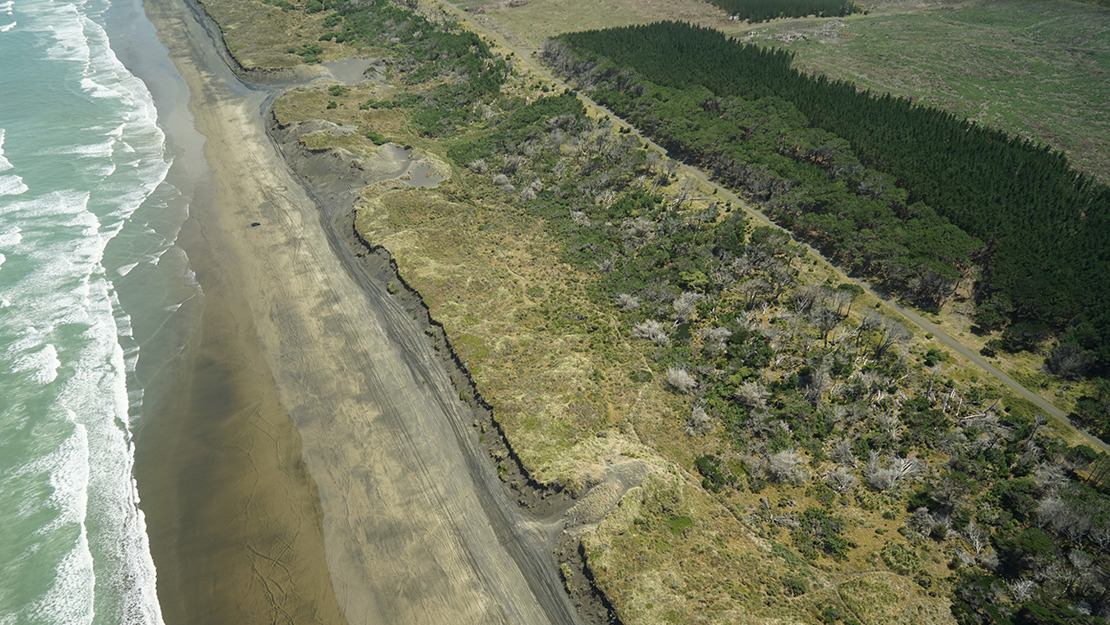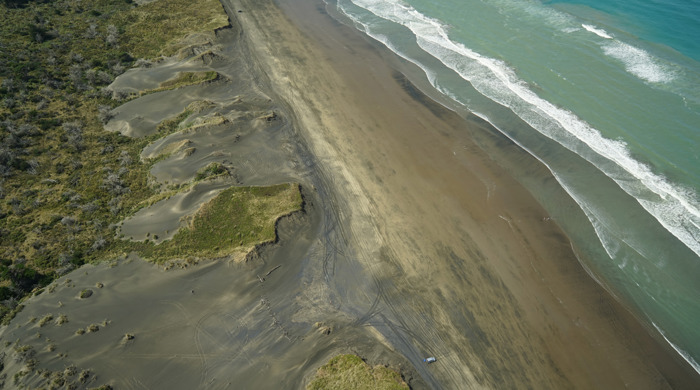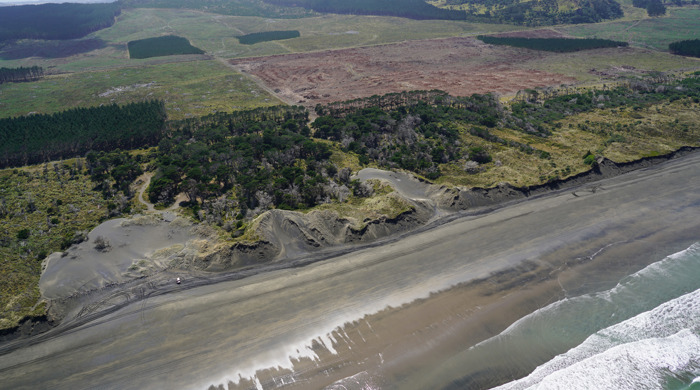Five Mile Strip
Located in Muriwai Regional Park, this extensive duneland biodiversity focus area provides important habitat for a number of threatened species.
Size: 197 hectares
Location
Five Mile Strip is situated within Muriwai Regional Park on Auckland's west coast. It extends out along the sand dunes for around 6.5km north from the southern side of Okiritoto Stream.

Ecosystems and vegetation
This area is mostly active dunes (DN2) where plants are exposed to constant wind-blown sand and salt spray. Spinifex, toetoe and an exotic species, marram grass, are adapted to growing in sand dune environments and are common here.
On the inland side of the active dunes, where the dune ridges provide protection from wind and wind-blown sand, creating more stable conditions there is a mix of native plants including oioi, knobby clubrush, swamp twig rush, pohuehue, sand coprosma, toetoe and trip-me-up (Carex testacea), a coastal sedge (DN5). These species are fairly widespread throughout the dunes including in wetter areas known as dune slacks.

Sand dune ecosystems are a national priority for protection. Spinifex, pīngao grassland or sedgeland (DN2) is regionally Endangered and oioi, knobby clubrush sedgeland (DN5) is Critically Endangered regionally.
Pine treeland covers a large proportion of the site with a variety of native shrubs growing beneath. A small area of pōhutukawa and karo forest has been planted. Naturally established native forest and scrub (WF5) includes patches of wind-shorn kānuka scrub, and also kānuka forest where the vegetation is protected from the prevailing south-westerly wind.

Threat management
Our restoration priorities at Five Mile Strip are:
- controlling invasive weeds
- pest management to protect dune vegetation
- preventing damage caused by off-road vehicles illegally driving through the dunes.
Other risks which could damage the dune ecosystems and threatened native species include:
- fires
- storm events
- myrtle rust.



